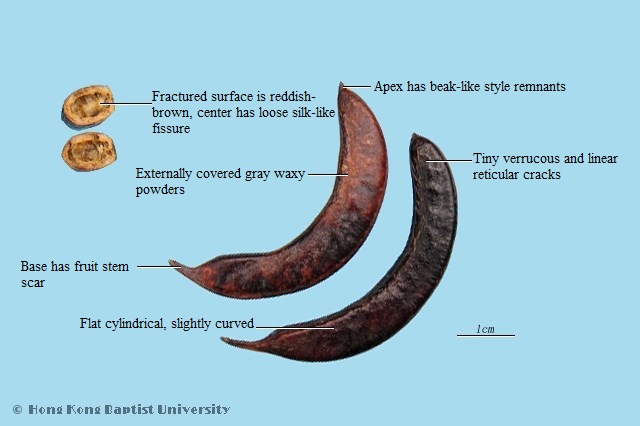Production RegionsPrimarily produced in the Chinese provinces of Shandong, Yunnan, Guizhou, Sichuan.
Macroscopic FeaturesCylindrical, slightly flat, curved in a sickle shape, 5~10cm long, 5~12mm wide. Externally purplish-brown or purplish-black, covered in grayish-white powder, lustrous after the powder is removed, has tiny verrucous and linear cracks, ventral suture bulges in a ridge, dorsal suture faintly bulges with brownish-yellow longitudinal lines. Apex has beak-like style remnants, base has fruit stem remnants. Hard and brittle texture, easily fractured, fractured surface has brownish-yellow outer layer and yellowish-white center, relatively soft center, with pale green or pale brownish-yellow silk-like projections and angular reticular lines, when longitudinally cut open a neat concave arrangement can be seen, rarely seeds can be seen. faint odor, with a stinging feeling, causes sneezing when smelling the powder, sweet and spicy aftertaste.
Quality RequirementsSuperior medicinal material has small and full body, purplish-black color, luster, without stem, hard texture, lot of sticky flesh and pale green fractured surface.
PropertiesAcrid, salty, warm, little toxic.
FunctionsOpens orifices, transforms phlegm, dispels wind, kills worms. Apply to apoplexy and lockjaw, head wind, inveterate wind evil, throat impediment, panting with phlegm, distention and fullness accumulation, blocking orifices, swelling abscess, ulcer, tinea, head sore.
OriginThe dried infertile fruit of Gleditsia sinensis Lam.(Fabaceae)
